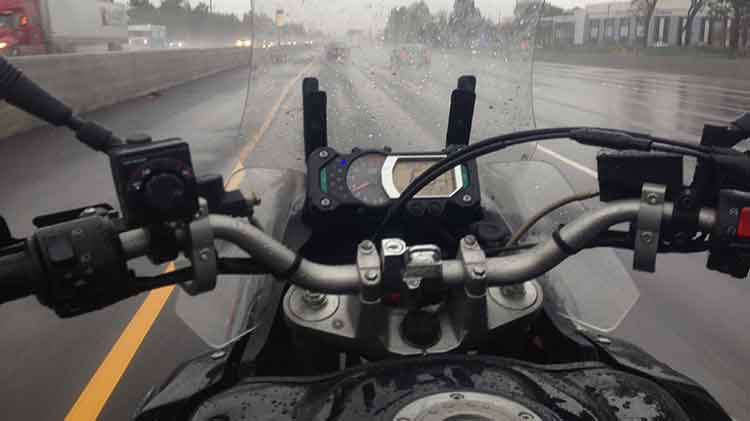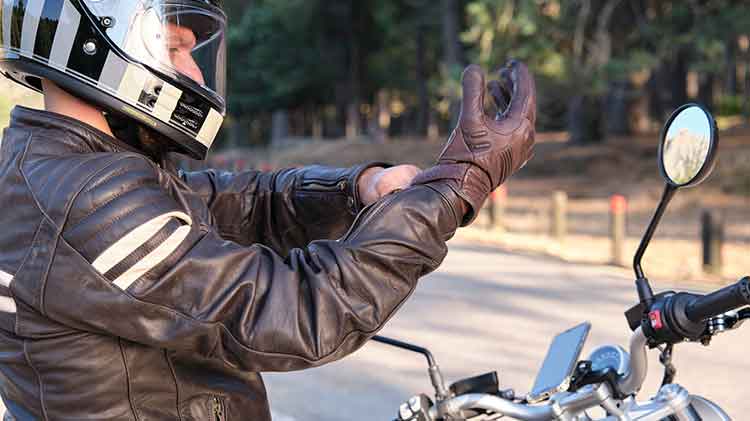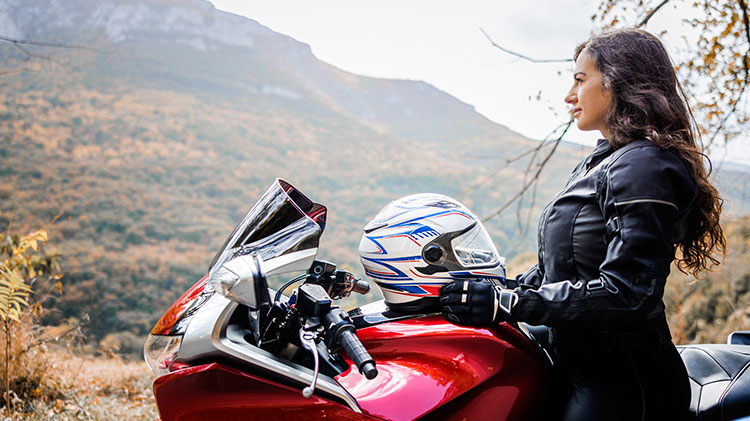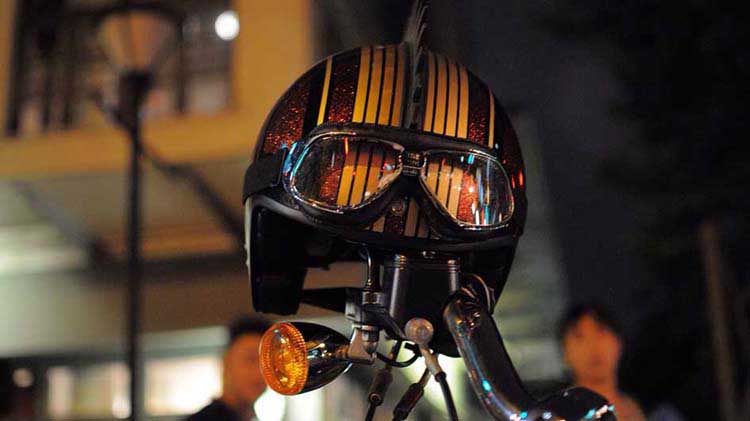Tips for motorcycle riding in the rain and other bad weather
When you are riding your motorcycle and the weather changes to rain, what do you do? Here are suggestions for dealing with changes in the weather.
When the weather warms, bikers grab their helmet and motorcycle riding gear and take to the open road. The sun, the open air and the freedom of the open road draws them out. In many parts of this country, there is a motorcycle season with warmer days and sunny skies. Of course, that season comes with days where the weather can change in a matter of hours and you could be riding a motorcycle in heavy rain.
When the sun retreats behind dark clouds and the rain moves in, are you ready to handle what mother nature might throw at you? Is your bike ready? Is your motorcycle insurance policy adequate?
Often the safest choice is to wait out the weather. When you can’t wait it out, let’s take a look at some tips on how to ride in the rain and other weather, as well as ideas to consider so you can be better prepared for those days when unexpected storm clouds try to rain on your riding day.
How to ride a motorcycle in the rain and drizzle
Have an agent contact me
with a quote
- Be patient and slow down – The roads are slicker when they are wet. In part, this is due to the oil from other cars collecting on the surface in dry weather. Leave extra time to stop and enough room between you and the cars around you as the wet pavement might cause you to lose traction and hydroplane.
- Use headlights – Your visibility might be compromised in rainy conditions due to the clouds blocking the sun. Headlights can help. They will also help cars see you in the dim light.
- Go around standing water – Try not to cross standing water or flooded roadways. You might not be as aware of how deep the water is. Find an alternate route so you won’t be trapped in a flood.
- Turn off cruise control – Take control of your speed to potentially react faster to road conditions.
Motorcycle riding in fog
- Turn on the low beams and fog lights – Your headlights should be on as well as your fog lights if you have them.
- Don’t be afraid to wait it out – If you’re having trouble when you’re leaving, the fog probably won’t get better when you hit the open road. Consider waiting until the fog clears.
Riding a motorcycle in wind
- Look out – Watch for flying debris – in the air and from the roads. Be extra careful when passing or being passed by other riders or vehicles.
- Hold off on pulling a trailer – When there are high winds, it’s more difficult to pull a trailer, especially those with a “high profile.”
- Stay calm – Heavy crosswinds can make riding unpredictable, especially for new riders. Don’t overreact and tighten your grip, which makes it harder to steer.
Severe weather motorcycle driving tips
- Tune in – Listen to a local weather radio station for any storm and traffic updates.
- Don’t try to outrun a tornado – Stop and find the nearest solid shelter. If one is not close by, lie down in a ditch or low-lying area. Keep your helmet on and your face down to protect against flying debris and cover the back of your head and neck with your hands.
- Don't wait – Once the danger has passed, leave low-lying areas.
- Stay alert for flash floods – A flooded roadway may look crossable, but don’t risk it. It doesn’t take much water or current to sweep you and your motorcycle off the road and downstream.
Tips for riding a motorcycle in the winter ice or snow
- Slow down on bridges and overpasses – They freeze first, so take it slow and avoid sudden changes in speed or direction.
- Keep an eye out for black ice – This can be a hard-to-see glaze of ice or water that will cause slippery surfaces on the road.
- Keep the visor on your helmet clear – Visibility is crucial, especially in bad weather.
- Brake cautiously – Abrupt braking can cause lockup and loss of steering control. If you have anti-lock brakes (ABS), apply constant, firm pressure to your brake controls.
Riding in all types of weather
- Emergency kit – Pack and store an emergency kit in your saddle bags if you’re going on a long ride.
- Motorcycle recalls – Periodically check with your local dealer to see if any recall notices have appeared on your motorcycle.
- Ride with a buddy – Consider riding with a partner, but maybe hold off on riding double until you’re very familiar with your bike.
- Motorcycle gear – When the weather is hot, cold or rainy, ensure you have the right motorcycle riding gear for the weather. Try to find bright gear to help you be seen by other drivers and consider anti-fog sprays on your visor to help increase visibility.
- Tire pressure – Before you ride, check to make sure your tires are properly inflated.
- Stay rested and hydrated – Take breaks on longer trips to help maintain your focus on the road.
The open road is an exciting and fun adventure for a motorcycle enthusiast. But the weather can sometimes be a challenge for those rides. It’s important to be prepared if the unexpected happens and that’s making sure you understand how motorcycle insurance is different from auto and home insurance. Contact a State Farm® agent to help you select the motorcycle insurance policy that best fits your needs.




